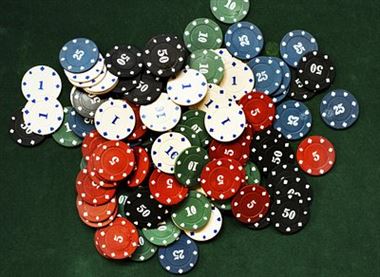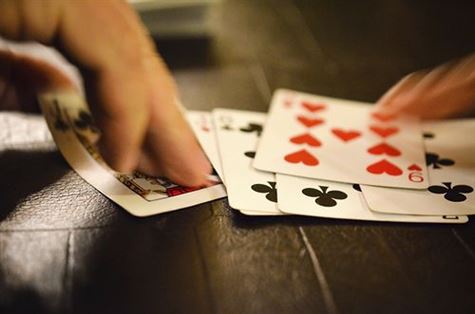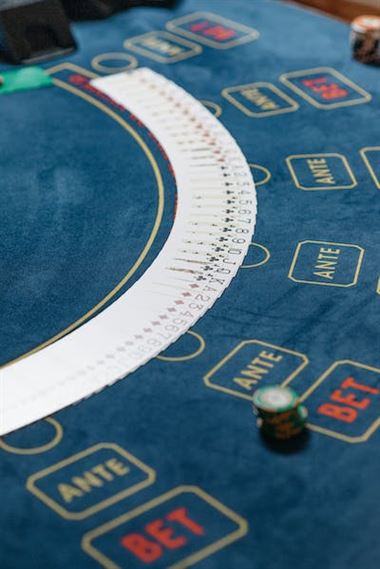Poker is a game of skill, strategy, and calculated risks. To be successful in the long run, poker players must not only possess exceptional gameplay abilities but also employ effective bankroll management strategies. Managing your bankroll properly is crucial for maximizing profits and minimizing losses in the world of poker.
Effective Bankroll Management Strategies for Poker Profit Maximization
One of the most important aspects of bankroll management is setting a budget. Before even sitting down at a poker table, it is essential to determine how much money you are willing to risk. This budget should be an amount that you can comfortably afford to lose without negatively impacting your daily life or financial stability. By setting a budget, you establish a clear limit on your potential losses and avoid chasing losses by going over your predetermined amount.
Once you have set a budget, the next step is to divide your bankroll into smaller units called buy-ins. The number of buy-ins you allocate for each game or tournament depends on the level of risk you are comfortable with. Generally, professional players recommend having at least 20-30 buy-ins for cash games and 100-200 buy-ins for tournaments. By dividing your bankroll into buy-ins, you protect yourself from significant losses and ensure that you have enough funds to sustain yourself during inevitable downswings.
In addition to allocating buy-ins, it is vital to choose the right stakes that match your bankroll size. Playing beyond your means can lead to unnecessary risks and potential bankruptcy. Conversely, playing at stakes that are too low may limit your profit potential. Finding the right balance is key. As your bankroll grows, you can gradually move up to higher stakes, increasing both the challenge and potential rewards.
Another important aspect of bankroll management is keeping detailed records of your wins and losses. Keeping track of your performance allows you to identify trends, assess your progress, and make informed decisions about your gameplay and bankroll allocation. By analyzing your results, you can identify leaks in your strategy and adjust accordingly to maximize your profits. Additionally, keeping records helps you stay accountable and disciplined, as it provides a clear overview of your financial performance.
To further protect your bankroll, it is crucial to have a stop-loss limit in place. A stop-loss limit is the maximum amount of money you are willing to lose in a single session or day. Once this limit is reached, it is essential to have the discipline to walk away from the table and avoid chasing losses. By setting a stop-loss limit, you prevent yourself from making impulsive decisions in the heat of the moment and protect your bankroll from significant depletion.
Lastly, managing your emotions is paramount when it comes to effective bankroll management. Poker can be an emotionally charged game, with highs and lows that can impact decision-making. It is crucial to remain calm, composed, and objective throughout your gameplay. Avoiding tilt, which refers to emotional frustration or anger after a loss, is key to maintaining a stable bankroll. By staying level-headed and making rational decisions, you increase your chances of maximizing profits and minimizing unnecessary risks.
In conclusion, effective bankroll management is vital for poker players seeking to maximize their profits. Setting a budget, dividing your bankroll into buy-ins, choosing the right stakes, keeping detailed records, implementing a stop-loss limit, and managing your emotions are all critical components of successful bankroll management. By following these strategies, you can navigate the ups and downs of poker with confidence and increase your chances of long-term profitability.
Analyzing Hand Histories: Unlocking Profitable Poker Strategies
In the world of poker, analyzing hand histories is an essential skill for any serious player looking to maximize their profits. By carefully studying past hands and understanding the decisions made, players can gain valuable insights into their opponents’ strategies and improve their own gameplay.
One of the first steps in analyzing hand histories is reviewing the pre-flop action. This initial stage sets the tone for the rest of the hand and can reveal a lot about the players involved. Pay close attention to the opening raises, re-raises, and calls made by each player. Are they playing aggressively or passively? Do they have a tendency to bluff or only play premium hands? These observations can help you adjust your own strategy accordingly.
Once the flop, turn, and river are dealt, it’s time to analyze the post-flop action. This is where the real decision-making happens, as players have more information to work with. Look for patterns in how players bet, raise, or check during these stages. Are they betting consistently with strong hands or varying their bets based on board texture? Are they quick to fold when faced with aggression? Identifying these tendencies can give you a significant edge at the table.
When analyzing hand histories, don’t forget to consider the size of the pots being played. Understanding the pot odds and implied odds can help you make better decisions in similar situations in the future. Did a player call a large bet with a drawing hand but ended up hitting their draw on the river? Assess whether their decision was mathematically sound or if they got lucky. Recognizing these situations can inform your own betting strategies moving forward.
Another crucial aspect of analyzing hand histories is assessing your own decision-making process. Did you make any mistakes or miss profitable opportunities? Be honest with yourself and identify areas for improvement. Perhaps you folded too quickly or failed to recognize a good spot to bluff. By acknowledging your weaknesses, you can work on refining your skills and becoming a more formidable player.
In addition to reviewing individual hand histories, it’s also beneficial to analyze trends over multiple sessions. This broader perspective allows you to identify long-term patterns in your own play and that of your opponents. Are there certain situations where you consistently struggle or excel? Do your opponents have any recurring weaknesses that you can exploit? Identifying these trends can help you develop more effective strategies and increase your overall profitability.
Lastly, don’t underestimate the power of using poker software to aid in analyzing hand histories. Many programs offer detailed statistical analysis and tracking tools that can provide invaluable insights into your gameplay. These software solutions can highlight areas for improvement, track your progress over time, and even suggest optimal plays based on previous data. Utilizing these resources can give you a significant advantage in honing your poker skills.
In conclusion, analyzing hand histories is a vital skill for any serious poker player looking to maximize their profits. By carefully studying past hands, observing opponent tendencies, and assessing your own decision-making process, you can gain valuable insights that will inform your future gameplay. Remember to consider the pre-flop and post-flop action, pot sizes, and overarching trends over multiple sessions. Additionally, leverage poker software to enhance your analysis and improve your overall strategy. With diligent study and practice, mastering the art of analyzing hand histories will undoubtedly unlock profitable poker strategies.
Mastering Positional Play: A Key to Increasing Poker Profits
In the world of poker, skill and strategy are essential components for success. While luck can play a role in individual hands or sessions, it is the ability to make calculated decisions that ultimately determines long-term profitability. One aspect of poker strategy that often goes overlooked is positional play. Understanding and utilizing position effectively can significantly increase your chances of winning and maximizing profits.
Positional play refers to the order in which players act during a hand. The player who acts last, also known as being “in position,” has a distinct advantage over those who must act before them. This advantage stems from having more information about their opponents’ actions, allowing for better decision-making. Conversely, being “out of position” puts a player at a disadvantage, as they must make decisions without knowing how their opponents will act.
The importance of position becomes evident when considering the different stages of a hand. In the pre-flop phase, acting last provides valuable insight into the strength of your opponents’ hands. If everyone before you folds, you have the opportunity to raise with a wider range of hands, potentially forcing your opponents to fold weaker holdings. On the other hand, if there are multiple raises ahead of you, you can confidently fold marginal hands, avoiding potential losses.
Once the flop is dealt, position becomes even more critical. As the first player to act after the dealer, known as the “under the gun” position, you have little information about your opponents’ hands. This lack of knowledge makes it difficult to make informed decisions, often leading to mistakes. However, if you are in a late position, such as on the button or cutoff, you can observe your opponents’ actions before making your own choices. This allows you to gather information and tailor your strategy accordingly.
Post-flop positional play involves leveraging the advantage gained from acting last. For example, if you have a strong hand and your opponent bets into you, being in position allows you to call or raise with confidence, knowing that you can extract more value from their weaker holdings. Conversely, if you have a weak hand and your opponent checks, being in position enables you to bluff more effectively, as they are less likely to call without a strong hand.
In addition to exploiting positional advantages, it is crucial to minimize the impact of being out of position. One way to achieve this is by playing tighter ranges when acting first, especially in early positions. By narrowing your range, you reduce the likelihood of making costly mistakes with marginal hands. Additionally, being selective about which hands you play in early positions ensures that you enter pots with stronger holdings, increasing your chances of winning.
Mastering positional play requires practice and observation. Pay attention to how your opponents act in different positions and adjust your strategy accordingly. Take note of patterns and tendencies, as these can provide valuable insights into their decision-making processes. Furthermore, strive to maintain a balanced range of actions regardless of your position, as this prevents your opponents from easily exploiting your tendencies.
In conclusion, mastering positional play is a key component of maximizing poker profits. Understanding the advantages and disadvantages associated with each position allows for better decision-making throughout a hand. By leveraging positional advantages and minimizing the impact of being out of position, players can increase their chances of success and ultimately improve their long-term profitability. So next time you sit down at the poker table, remember the power of position and use it to your advantage.
Optimal Bluffing Techniques for Maximizing Poker Profitability
Bluffing is an essential skill in poker that can greatly impact your profitability. When used effectively, bluffing can help you win pots and maximize your profits. However, if done poorly, it can lead to significant losses. In this article, we will discuss some optimal bluffing techniques that can help you enhance your poker profitability.
Firstly, timing is crucial when it comes to bluffing. You need to choose the right moment to execute a bluff. Bluffing too often or at the wrong time can make your opponents suspicious and diminish the effectiveness of your bluffs. It is important to pay attention to the dynamics of the game and the behavior of your opponents. Look for opportunities where your opponents are likely to fold, such as when they show signs of weakness or indecisiveness. By choosing the right timing, you increase your chances of success and boost your profitability.
Another key aspect of successful bluffing is reading your opponents. Observing their playing style and tendencies can provide valuable insights into whether they are likely to call or fold when faced with a bluff. Tight players who only play strong hands are less likely to call a bluff, while loose players who play a wide range of hands may be more inclined to call. Additionally, paying attention to their body language and betting patterns can give you clues about the strength of their hand. By understanding your opponents’ tendencies, you can tailor your bluffing strategy accordingly and increase your profitability.
Furthermore, sizing your bluffs appropriately is crucial. Betting too much can scare away potential callers, resulting in missed opportunities to win pots. On the other hand, betting too little may not generate enough pressure on your opponents to fold. The size of your bluff should reflect the pot size and the image you have built at the table. If you have been playing tight and conservative, a larger bluff may appear more credible. Conversely, if you have been bluffing frequently, a smaller bluff may be more effective. By adjusting your bet sizing, you can maximize your profitability and keep your opponents guessing.
Additionally, it is essential to consider the board texture when bluffing. A coordinated board with multiple potential draws is less favorable for bluffing, as your opponents are more likely to have strong hands or draws that they are unwilling to fold. Conversely, a dry and uncoordinated board offers better opportunities for successful bluffs. Analyzing the board texture and considering the range of hands your opponents are likely to have can help you determine whether a bluff is likely to succeed or not. By selecting the right boards to bluff on, you increase your chances of profitability in the long run.
Lastly, managing your image at the table is vital for successful bluffing. If your opponents perceive you as a tight and cautious player, they are more likely to fold when faced with a bluff. However, if you have a loose and aggressive image, your bluffs may be met with skepticism. It is important to maintain a balanced and unpredictable playing style to keep your opponents guessing. Mixing up your play by occasionally showing down strong hands after a bluff can help reinforce the perception of unpredictability and increase your bluffing success rate.
In conclusion, optimal bluffing techniques are essential for maximizing poker profitability. Timing, reading your opponents, appropriate bet sizing, analyzing board texture, and managing your table image are all key factors to consider when executing a successful bluff. By mastering these techniques and incorporating them into your gameplay, you can enhance your profitability and become a formidable poker player.
The Art of Reading Opponents: Enhancing Poker Profit Strategies
Poker is a game of skill and strategy, where players need to make calculated decisions based on the information available. One crucial aspect of poker that separates the pros from the amateurs is the ability to read opponents. By understanding your opponents’ playing styles, tendencies, and tells, you can gain a significant advantage at the table.
To begin mastering the art of reading opponents, it’s essential to observe their actions closely. Pay attention to how they bet, raise, or fold in different situations. Are they aggressive or passive? Do they bluff frequently or only when they have a strong hand? These observations will help you build a profile of each opponent and adjust your strategies accordingly.
Another valuable tool in reading opponents is studying their body language. Non-verbal cues such as facial expressions, hand movements, and posture can reveal a lot about their confidence and the strength of their hand. For example, if an opponent suddenly becomes tense or starts fidgeting after placing a large bet, it could indicate that they are bluffing. On the other hand, a relaxed and composed demeanor might suggest a strong hand.
In addition to observing behavior, listening to opponents’ verbal cues can provide valuable insights. Some players may unintentionally give away information through their choice of words or tone of voice. If an opponent hesitates before making a decision or uses certain phrases like “I guess I’ll call,” it could be a sign of uncertainty or weakness. Conversely, confident statements like “I’m all-in” might indicate a powerful hand.
However, it’s important not to rely solely on these individual cues. Skilled opponents are aware of their own tells and may use them as deception tactics. Therefore, it’s crucial to consider multiple factors and look for patterns in your opponents’ behavior. This requires patience and careful observation over an extended period of time.
Once you have gathered enough information about your opponents, it’s time to adapt your strategies accordingly. Against aggressive players who frequently bluff, you can exploit their tendency by playing more cautiously and calling their bluffs when you have a strong hand. On the other hand, against tight players who only bet with premium hands, you can loosen up your starting hand requirements and steal pots with well-timed aggression.
Furthermore, understanding your opponents’ tendencies allows you to make better decisions in difficult situations. For example, if you know that a particular opponent is prone to making large bets with weak hands, you can confidently fold when facing their aggression. This saves you from potentially losing a significant portion of your stack.
However, reading opponents is not an exact science, and there will always be uncertainties. Skilled players are capable of adjusting their playing styles and disguising their intentions. Therefore, it’s important to continuously update your observations and adapt your strategies as the game progresses.
In conclusion, mastering the art of reading opponents is a crucial skill for maximizing poker profits. By observing their actions, studying their body language, and listening to verbal cues, you can gain valuable insights into their playing styles and tendencies. These insights allow you to adjust your strategies accordingly and make better decisions at the table. However, it’s essential to remember that reading opponents is not foolproof, and continuous observation and adaptation are necessary for long-term success in poker.




